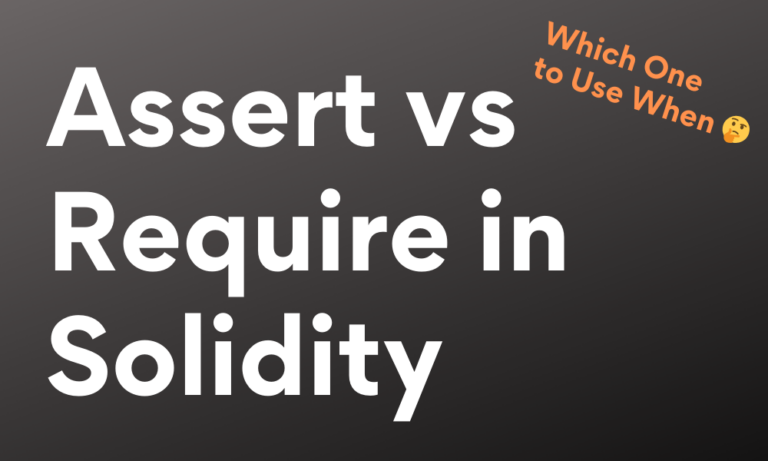Discussions on the blockchain are getting pretty cool. Today, I am telling you a bit about enterprise blockchains. Ever heard of it? Well, now you have!
With the world getting better each day, at least technologically, there has been a mushrooming demand for even better security systems. Waking up in 2021, we see blockchain becoming a concept on everyone’s tongue.
The rise of enterprise blockchains is resulting in companies now refurbish their course of business and this isn’t just limited to the tech industry! Enterprise blockchains are flourishing businesses with better levels of security and control.
However, there’s still a large number of people who think blockchain is something associated with cryptocurrencies. And some don’t even know what blockchain means!
But today, I am focusing on that section of society that apparently knows what blockchain is, and is interested in knowing how blockchains are helping businesses, or integrating blockchains into their enterprises but don’t quite have an idea as to what it is.
Whatsoever, this piece should be your answer. In this blog, I am covering a brief overview of enterprise blockchains – best suited for beginners.
So, let’s begin.
What are Enterprise Blockchains?
Enterprise blockchains, as the name suggests, are networks that are purely used by enterprises and organizations to solve enterprise-level problems. Organizational demands and problems vary on a large scale. Thus, blockchain networks have adapted themselves to solve these problems.
In the modern era, the traditional and typical strategies to solve new-age corporate problems are becoming obsolete. Enterprise blockchains projects will only increase each day gradually conquering a large portion of the globe.
“Blockchain is fully capable of handling organizational level demands. The long blockchain history lets us know about its capabilities. With lots of blockchain projects happening all around us, it’s only a matter of time when the technology is perfected for global utilization.” – 101Blockchains
Blockchains have flourished businesses by enhancing their impact on consumers. Enterprise-level blockchains are exploding with demands also because important firms like Microsoft, Amazon, IBM, and many others are putting them to use and also contributing to the technology with amazing projects.
Let us move forward to take a look at the different types of enterprise blockchains.
Different Types of Blockchain Networks for Enterprises
There are several types of blockchains that enterprises can make use of. For this blog, I am classifying the types based on permission and the general ones.
General Classification of Blockchains
The four popular types of blockchains are as follows. To read about them, please click them.
Let me explain each one in brief.
Public Blockchains
A public blockchain is unrestricted of limitations. Anyone with an internet connection can get access to this system. People are permitted to validate blocks and send transactions.
Usually, public blockchain networks offer some form of encouragement or incentives that validate blocks.
Private Blockchains
A private blockchain network is used by private organizations or firms to solve their business problems. They develop and manage these networks.
The control over the mining process and consensus algorithms are solely in the hands of the owning firm. They may decide who may or may not join the private network and download nodes.
Access to use the so-called distributed ledger is only given to chosen participants.
Hybrid Blockchains
Ideally, a hybrid blockchain is the right blend of both public and private blockchains. It is a system with controlled access and at the same time, some freedom and mobility. The architecture is designed in a way that it is not publicly available for everyone to use however, still offering the typical features of a blockchain like integrity, security, and transparency.
Hybrid blockchains are fully customizable. Participants in this network can decide who can join the network or what transactions are openly available.
Federated Blockchains
Federated networks or blockchain consortia are like the missing pieces of private networks, however, there are underlying differences.
A federated blockchain removes the concept of centralization from a private network; that is the organization. This network is used by several other entities and brings back the decentralized model.
Think of it as a hub where several enterprises exchange information and work at the same time.
Permission-level Classification of Blockchains
- Permissioned
- Permissionless
Permissioned Blockchains
In a permissioned blockchain network, nodes are unable to get free access to the ledger and view it. It works in a closed environment. Here, the nodes that have permission, can get access to the network.
This type of blockchain is usually preferred by centralized enterprises as they get to control the system. in this system, anyone who meets the criteria to join the network can view the ledger and make transactions; in short, be a participant. But first, they need to qualify the joining criteria and get permission.
Permissionless Blockchains
This enterprise blockchains classification is quite simpler. This system allows participants in the consensus and is free of restrictions and limitations. It lets participants can own their addresses and interact in the network.
Anyone can start a transaction in the system. enterprises that embrace open environments happily adopt this network.
Challenges in Implementing Enterprise Blockchains
Enterprise blockchain challenges are highly crucial to learn. Enterprises when switching from traditional ways of conducting business to doing them the blockchain way, undoubtedly result in various implementation challenges.
Implementing a blockchain for your business requires a great deal of basic understanding of the technology. Even today, technology is quite undefined.
When referring to enterprise blockchain challenges, I mean the hurdles or the extra work needed to do when getting started with enterprise blockchains.
This piece will uncover the dark side of enterprise blockchains, that is, enterprise blockchain challenges that you may expect when trying to implement one.
Top 5 Enterprise Blockchain Implementation Challenges
Let us get started with unveiling the top 5 enterprise blockchain challenges that companies face when implementing the technology.
1. Increasing Implementation Costs
This has proved to be one of the most common enterprise blockchain challenges that this technology sets forth for companies. Implementing this technology is usually harsh on the pocket of new enterprises.
A blockchain network’s cost is determined with help of criteria like performance in terms of TPS (transactions per second), the computational power requirement as well as energy consumption.
For instance, the Bitcoin blockchain network can only process 3 to 5 transactions per second, however, it consumes a whole lot of energy in the process.
On the other hand, Ethereum is still only capable of processing 30 transactions per second which are way too less when compared to VISA that can do 1,667 per second expandable up to 24,000 too!
Most blockchains adopt these networks’ technologies resulting in high costs and not up-to-the-mark performance.
2. Insufficient Literacy of Blockchains
Blockchain as a technology has just emerged and is still in its primitive stages. Most solutions that are sprouting up today are new making learning a prerequisite. When organizations look to solve their problems, they cannot afford much time as well as money to first understand the concept and then implement it.
It also gets difficult to look for professionals with complete knowledgebase because of their novelty. For enterprises to be able to successfully implement the technology to achieve their objectives, they must enhance their knowledge and understanding.
3. Struggles in Shifting from Traditional Ways
One another important enterprise blockchain challenges while implementation comes when companies struggle to transform from habituated conventional ways of doing business to an all-new way of conducting business, that is using blockchains.
The transitioning phase from traditional networks the company used is not only difficult but also time-consuming when it comes to adapting to the new systems. Many firms because of this reason often quit at this point and roll back to their old ways.
However, most of the trouble is only during the initial phase. Despite these challenges and the strong dependency on traditional ways, many firms have tried their best and are actually eating the fruit today by being able to serve their customers better.
4. Lack of Regulations
Blockchains are known for their peculiar feature of being decentralized. Although widely adored, this can pose a problem to enterprises. Lack of regulations can lead to increased risk vulnerabilities to businesses.
Keeping in mind these mishaps, many governments have refused to embrace blockchain as a solution. Moreover, it has posed a problem for government bodies to define the legal environment with regards to the technology, given its restriction to exercise control and complexities.
A blockchain network comprises various nodes or machines or users scattered across the globe. This makes it difficult for centra powers to exercise their control and rule outlaws due to a lack of boundaries within the system.
5. Security Problems
Security issues are a major problem faced by enterprises new to blockchain. It has also by far been the most important problem amongst this list of enterprise blockchain challenges.
Blockchain has its fame mainly because of its resilience to cyberattacks. However, there are still quite a few issues enterprise blockchains face when it comes to security. Hackers are still able to make their way into stealing important data if utmost care is not taken.
“In reality, there are numerous vulnerabilities inherent in technology due to immature processes and defenses. For instance, the chances of a person falling victim to phishing scams are quite high. Further, the lack of clear standards of development implies that there is a lot of malware that is lurking around within the industry. These, coupled with technology vulnerabilities as well as implementation exploits, pose a grave danger to unsuspecting users.” – 101Blockchains
Conclusion
Today, I am telling you a bit about enterprise blockchains. Ever heard of it? Well, now you have! The rise of enterprise blockchains is resulting in companies now refurbish their course of business and this isn’t just limited to the tech industry! Enterprise blockchains are flourishing businesses with better levels of security and control.





